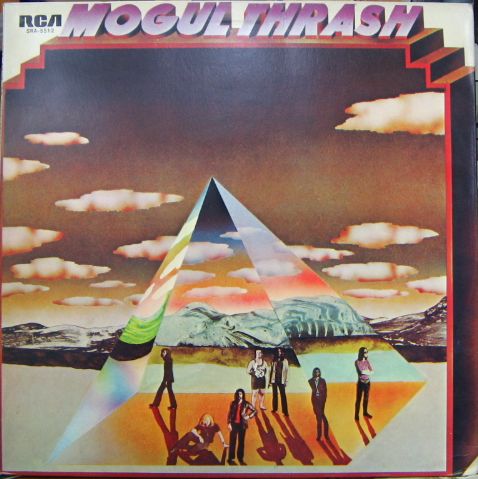As interesting as the Swing Revival of the 90's seemed (and relatively long-lived for fads, lasting the whole decade and dripping into the 21st century), it's had little long-term impact on pop culture at large, aside from fastening fedoras to the heads of awful young men the nation over. Oh, sure, a tiny handful of bands gained impressive fan bases and piles of cash, the two big ones being the Cherry Poppin' Daddies (of "Zoot Suit Riot" fame) and Big Bad Voodoo Daddy, but even mentioning Royal Crown Revue will bring most music fans to a screeching "Huh?". That being said, for somebody like me who isn't an expert on Swing Revival bands, encountering a band like Donkey, who were most likely tangential to the movement but could have only seen widespread success within its confines (not that they did), is an interesting moment. Formed in Athens, GA, Donkey was the house band for The Point, a nightclub in Atlanta that is now a clothing store, and they released two albums in the mid-90's (or three if you believe Amazon lumping in the '97 album Stroke My Wings Gently by an unrelated indie rock band). They crafted a unique mixture of Swing Revival, the Fine Young Cannibals, and Steely Dan-esque lounge rock in their brief time in the sun, and came to my attention primarily as a dollar CD at In Your Ear in Boston. The value of their album Slick Night Out is inversely proportional to the amount of information about them online, and considering their Allmusic entry is only two sentences long you can take my word for it that it's a dang good time.
Donkey was never really meant to be seen on a national stage, and in that spirit Slick Night Out is a live album, capturing a typical, yet gleaming, night at The Point with everybody's favorite music boys. As much as we all adore Thad Jones's big band from the 70's it's easy to forget that they were the Monday night house band at the Village Vanguard, and their songs could be heard any given Monday simply by walking there. What gives Donkey their beauty is that they seem free to explore many different avenues, maintaining a healthy allergy to pigeonholing. "Phantasmo del Gato" seems almost Tom Waitsian in its bar-music synthesis, with the guitar solo at 1:00 ripped from whatever glorious universe Progressive Rockabilly exists in. This quality is kind of hard to detect on a song-by-song basis, but maybe a song from their second album, Ten Cent Freaks, will help:
Many of their songs possess a rock intensity and focused songwriting that jazz is so very good at eschewing. Jazz's most individual quality is improvisation, and Donkey never much bothered with extended solos, instead finding its drive from the vocals of founder T. B. Ferster, a voice more akin to Barenaked Ladies frontman Steven Page than a stereotypical crooner, the latter of which was a prized possession among Swing Revival bands. As is the case with obscure groups the most interesting songs of theirs never make it to YouTube, so I can't play you one of their rockiest and most musically interesting songs, "Sweet Vermouth". The one that immediately follows it, "Baby Mae", is of course fully available-
-and Ferster has slipped so much into Steven Page's singing voice I thought I was hearing "Brian Wilson" all over again. The song also illuminates how well a horn section fits into a rock context, a lesson you'd think we already learned from Blood Sweat & Tears but we apparently forgot. While every member of the band does click Donkey never really raised their voice, perhaps because of their nightclub gig but also due to a wisely laid-back persona reminiscent of the Grand Saturday Night. This is probably the biggest factor that kept them from the big time - as well as the fact Slick Night Out was released on Georgia-based Steam Records, though I have no evidence they released anything other than this album. The live recording lacks the booming presence and polish of a bells-and-whistles studio recording, and "Zoot Suit Riot" will always sound better on your car stereo because of equalized, overcranked levels. Donkey seemed masters of the club stage, and while I'm glad their stuff was captured on disc ripping them from their small pond may have done more damage than good. I also like that they weren't going for an artificial gloss like the other Swing Revival groups, rather stretching out into their own little groove - and that freedom ensures its relative timelessness, while Swing Revival may seem more and more embarrassing in the future. Slick Night Out won't become your favorite album or change the way you look at rock, but it's a great CD for your next party and is a welcome alternative to the more dated 90's music that gained more fame in its time. Take Donkey in slow and deep, like a fine single malt, and you'll do just fine. And hey, what bar band do you know that got their own music video (before YouTube, of course)?
~PNK











